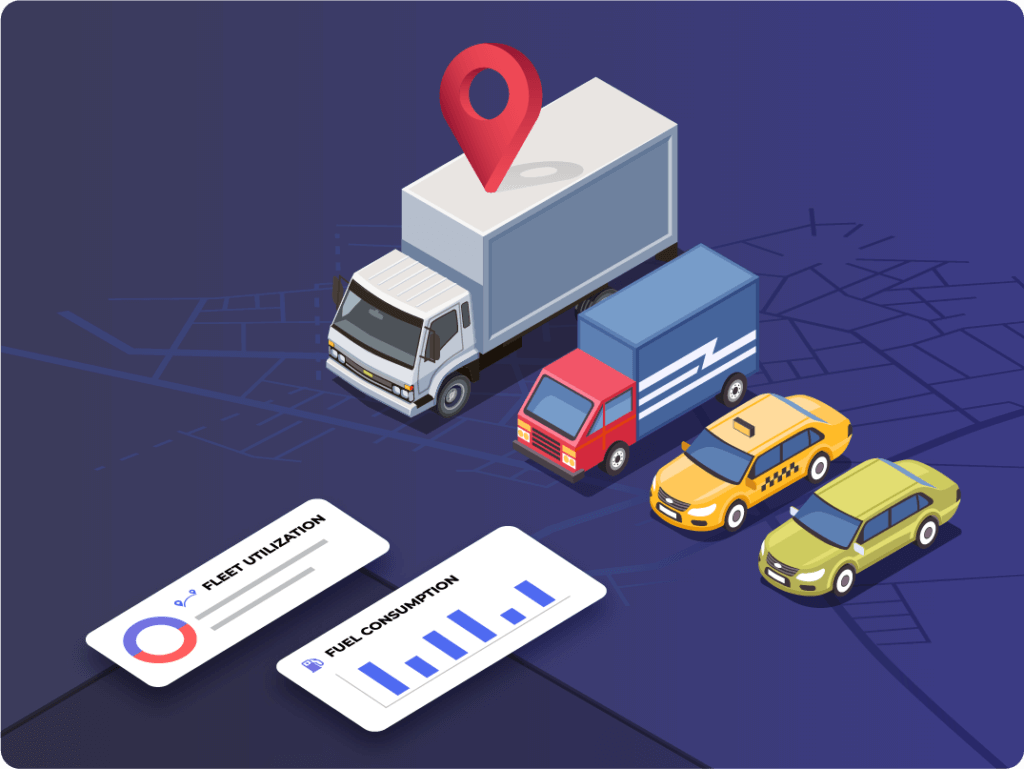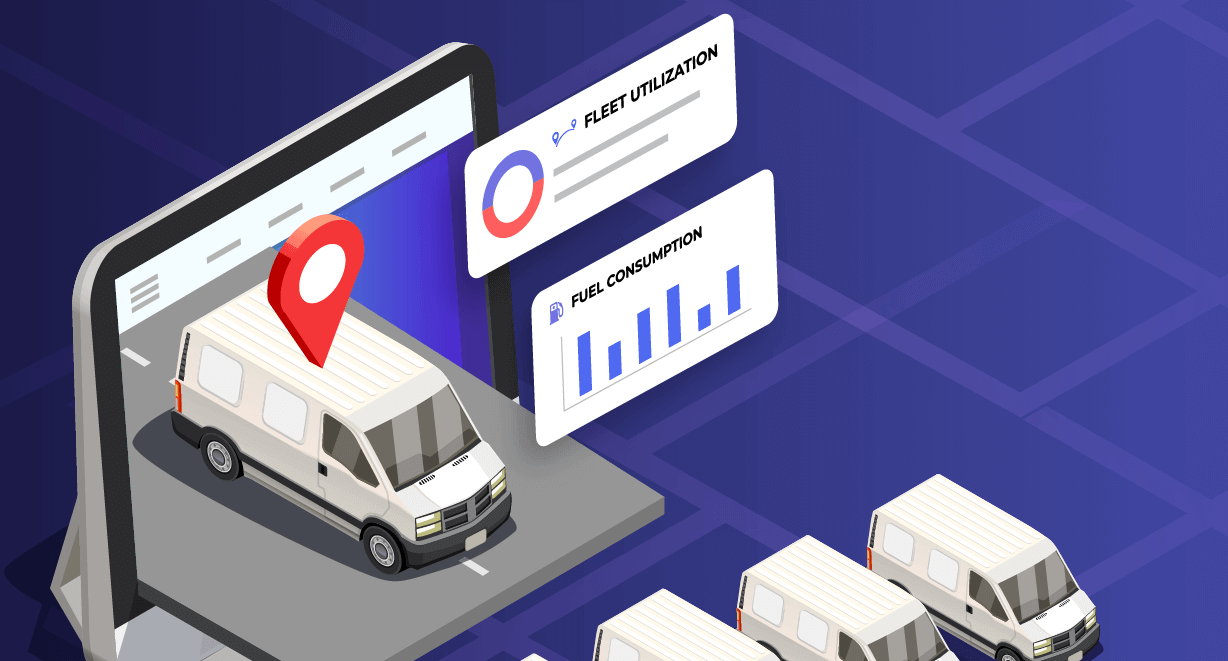Build Fleet Management Solutions using APIs
Getting the right software for tracking vehicles & drivers is often a challenging task for fleet management companies. The most common issues are as follows:
- Pricing: Most ready-to-use software is too expensive for small fleet owners.
- Scalability Issues: Traditional tracking solutions require hardware devices placed in each vehicle, making it difficult to scale quickly.
- Difficulty in integrating with existing Enterprise suites.
- Complex development, making homegrown solutions time consuming and expensive.
Moreover, fleet management as a business is also changing. From fleets where 100% of vehicles are owned by a company (and drivers are on the payroll), we move to a structure where multiple parties and drivers who own the cars are independent operators. The role of fleet management companies in such cases is to play the role of the aggregator.
In the aggregator model, having reliable solutions integrated into the management tool is even more essential to ensure reliability and customer satisfaction.
Solution for Fleet Management Business
Due to the issues mentioned above and challenges, fleet companies are increasingly relying on solutions where the tracking can be done accurately without the need for installing hardware. The great news is that all smartphones come inbuilt with GPS. The smartphone GPS can be used for data collection.
Processing the data to get reliable insights is another challenge. As mentioned earlier, telematics development is complex and time-consuming. To solve this problem, it is advisable to build your tracking system using ready-to-use Vehicle tracking and driver tracking APIs.

Benefits of using APIs for Vehicle Tracking and Driver Tracking
The top benefits of using APIs for vehicle and driver tracking are as follows:
- Reduce development time from years to days: The API provider handles the complex heavy lifting in processing and analyzing data. You need to connect the correct APIs for the right features.
- Benefits of Machine Learning: In most cases, vehicle and driver data analysis is done using supervised learning algorithms. In the case of supervised learning, a bigger training data set guarantees better results. The API providers have access to more data points than individual fleets, leading to better results.
- No maintenance cost: Building software of your own is not just a one-time task. You need to maintain it to stay functional and relevant with time constantly. If you build using APIs, you practically need not worry about maintenance.
- Easy to integrate with your enterprise suite: Most enterprise suites allow you to incorporate features using 3rd-party APIs. You can thus just focus and invest only on parts that you essentially need.
- Flexible Payment Options: Most API providers provide flexible payment options by paying based on usage.
- Low Development Cost: By using APIs, you are just not saving on time but saving on development costs as well. Analyzing data requires complex machine-learning algorithms. It would be best to have a data science team and a development team to get the best results. An in-house team of data scientists is a costly option. By using APIs, you can avoid all of that!
How to build your Fleet Management Solution using APIs
Here are the four steps that you need to follow to build your fleet management solution using APIs:
Brainstorm on the key feature and capabilities of the final product
At the very beginning, you need to ensure that you have a proper plan for the project to be successful. It’s helpful to have a complete list of features and capabilities you expect from the final product. Some companies may have basic vehicle location and driver location tracking requirements. In contrast, some other companies may want to integrate for advanced features such as driver scoring and eco-scoring of vehicles.
Some of the feature sets that you can consider are:
- Location and Trip Data
- Safe Driving Scoring
- Eco Driving Scoring
- Engagement based features (such as leaderboards)
- Insurance-related dataset
Feasibility analysis and budgeting
Once you know the features you require, you need to check out the API-based solutions available for implementing the features. Damoov’s telematics API provides most of the data necessary for Fleet Management Companies. Using Damoov’s APIs, you can implement typical features like safe driving scoring and implement niche requirements like drive coins and leaderboards.
Budgeting is also critical. There will be three main costs involved:
- The subscription cost of APIs
- Cost of Developing the fleet management software using the APIs
- Cost of Developing a mobile app to be installed on the smartphones of the drivers
In the case of Damoov, the Fleet Management API is free to use for up to 10 users. This makes it an excellent option to try out!
You can build standalone software for fleet management or integrate it with your existing enterprise suite. Most APIs provide integration guidelines for major enterprise applications.
Mobile app development costs can be slashed if you use an open-source SDK. You can try out Damoov’s telematics SDK, which is free.
Designing the Software & App
After feasibility study and budgeting comes the task of designing the software for fleet management and the app for data collection. In the case of fleet management software, your design would depend on whether you are building a standalone software or integrating the features into your existing business software.
In the case of the mobile app, you need to ensure the following:
- It should consume minimum power: If you are using APIs by Damoov, the app can work in the background and lower power consumption by 90%.
- It should be engaging: Most of the best practices are already coded if you are using an SDK. You need to configure it for your business.
- It should be compatible with all mobile operating systems: If you are building a custom app and not using an SDK, you may have to constantly monitor and maintain the app as per updates to iOS & Android. If you are using an SDK – this challenge is eradicated.
Programming and Integration
The programming effort depends on whether you are building the software on your own or using SDKs. If you are building apps on your own, you have the following option:
- Build separate Apps for iOS & Android
- Build a single app using an inter-platform compatible framework such as Flutter or ReactNative.
Damoov’s SDKs are available for both Flutter and ReactNative.
For integration, you may have to check the guidelines of your existing enterprise software. If you don’t want to integrate, you will have to plan for convenient data export.
Try Damoov for Building your Fleet Management Solution
Fleet management companies worldwide have found Damoov to be useful for quickly building their products at a much lower cost. Damoov provides you with all the elements that you need to make your solution:
- API for Data processing and Analysis
- SDK for building the mobile application
- Multiple data export options
- Integration with major 3rd Party Platforms
- Build apps that can run in the background with minimum battery consumption
- Most advanced Driver Scoring Model using 10+ factors
Useful links
- Company website: https://damoov.com
- Open-source telematics app: https://damoov.com/telematics-app
- Telematics SDK: https://damoov.com/telematics-sdk
- Telematics API: https://damoov.co/api-services
- Developer portal: https://docs.damoov.com
- Datahub: https://app.damoov.comm
- Github: https://github.com/Mobile-Telematics


